方案详情文
智能文字提取功能测试中
现代聚合物很少用作纯材料,更常见的是将不同聚合物的混合物结合起来以获得所需的物理特性。例如,聚苯乙烯的刚度通常与弹性聚合物相结合,以生产坚硬但耐冲击的材料。聚合物层压板在微电子、医疗、食品包装和化学工业中非常重要。由于层压板起到防潮和/或氧气屏障的作用,它们通常用于保护食品和化学品。有很多方法可以用来产生这些混合物,但最常见的方法之一是简单地将聚合物组装成层并形成层压板。最广泛使用的层压板结构光谱测量是傅里叶变换红外光谱(FTIR)。FTIR光谱是一种无损技术,可以对层压板中的成分材料进行化学识别。红外光谱提供了研究分子内原子或原子组的振动能和旋转能相互作用的能力,是一种强大的定性和定量工具。红外光谱反映了分子的永久偶极矩发生变化的振动运动。使用红外光谱分析聚合物可以获得大量信息。分子结构的微小变化通常会导致光谱与原始化合物的光谱明显不同。因此,红外光谱可用于识别特定化合物或化合物混合物的存在。本应用说明中实验证明:层压板似乎包括6层。基于红外光谱和光谱库的比较,PP(聚丙烯)和高度水解形式的PVOH(聚乙烯醇)被确定为主要成分。似乎有两种略有不同的PP类型;PP1和PP2可能是m.wt变体,或者PP1可以简单地包含少量添加剂以提供光密度的变化。此外,确定在界面处存在聚合物的混合。红外光谱不仅能够识别这些层,而且能够提供关于在界面处发生的聚合物混合的信息。这些有价值的信息将允许更准确地确定聚合物的物理性质以及它将如何处理层压板之间界面处的应力。Application Note Infrared Microscopy for the Analysis of PolymerLaminates in Beverage Packaging2/3 Infrared Microscopy for the Analysis o f Polymer Laminates in Beverage Packaging Laminates are combinations of polymers that combine the benefits and properties of the various polymers used in the laminate to create a better material . Polymer laminates have a multitude of uses including packaging for food and other products. Laminates act as moisture and/or oxygen barriers and as such are commonly used to protect foods and chemicals. Analysis of laminates is often required for quality control and to determine laminate adhesion problems. I n trodu c tion Modern polymers are seldom used as pure materials, more often mixtures o f different polymers are combined to give t he desired physical charac t erist i cs. For example, the r i gidity of polystyrene i s often combined with an elastic polymer to produce st iff yet shock res i stant materials. Polymeric laminates are important i n the microelectroni c s, medica l , food packaging, and chem i cal industr i es. Since laminates ac t as moisture and/or oxygen barriers, they are commonly used to protect foods and chemicals. J ASC O FT-IR Sp e ctr om eters There are many methods t hat can be used to generate these mix t ures but one of t he most common is to simply assemb l e the po l ymers into layers and create a l aminate. The most widely used structural spectroscopic measurement for laminates is Fourier Tra n sform infrared (FTIR). FTIR spectroscopy is a non-destructive technique that allows chemical identification of the component materials in the lami n ate. Infrared spectroscopy provides the ability to study the interac t ions of the vibrational and rotational energies of atoms or groups of atoms within molecules and is a power f ul qualit a t i ve and quantitative tool . Infrared spectra reflect vibrational mo ti ons that produce a change in the perma n ent dipole moment of the molecule. There is a l arge amount of information that can be gained by using i nfrared spectroscopy for the analysis of polymers.Minor changes to the molecular structure usually result in a spectrum that is clearly dist i ngui s hable f r om the spectrum of the original compound. Thus, the in f rared spectra ca n be used to i dentify the presence of a specific chemical compou n d or mi x ture of compounds. Several dif f erent polymer materials were selected for analysis including a prepared juice bot t le and a plastic food container . Laminate samples of controlled thickness were sectioned with a razor blade and the cross sec t ion exam i ned us i ng the F T -IR microscope. Microscope apertures ranging f rom 15 x 15 microns to as l arge as 50 x 50 microns were used to define sample areas for analysis. Analysis was performed using a JASCO F T /IR-620 a n d IRT-30 F T-IR microscope with a ceramic source, KBr beamspl i tter , and MCT detector. The resolution was 4 cm-1, wi t h 64 co-added scans for the s i ngle -beam background and sample spectra. T he spectral range was f rom 4000-700 cm-1. Figure 1. Juic e bott l e l aminate e xam i ned u s i n g t h e FT I R microscope , visual ly , you c a n i d entif y at least 4l ay e rs i n this im a ge. Figure 2. I nf r a r ed spectra of laminate pol y mers.Top: p o ly p ropy l ene Bottom: polyvinyl a lc o h ol. Figure 3. Juic e bot t l e l aminate l ayers d emonstrat i ng t h e t ra n sit i on of the polymer layers from po l ypropy l ene to polyv i ny l alcohol. Initial investigation of the polymer laminate found that the primary components of the laminate were polypropylene (PP) and polyvinyl alcohol (PVOH). Further study and careful examinat i on of the laminate polymer i mmediately adjacent to the PVOH layer revealed a gradient in the ratio of the polypropylene (PP) and polyv i nyl alcohol (PVOH) polymers . Conclusions Lam i nate appears to compri s e 6 l ayers. PP (polypropylene) and a highly hydrolyzed form of the PVOH (polyv i nyl alcohol) were identifi e d as th e primary components based on the comparison of the infrared spectra to spectral l i br a ries. There appear to be two sl i ghtly different PP types; PP1 and PP2 are probably m.wt .var i ants or PP1 may simply contain a small amount of a n additive to provide the change in optical density.Additionally, it was determined that there was a mixing of the polymers at the interfaces. I nfrared spectroscopy was not only able to identify the layers but also to give information on the polymer mixing occurring at the interface . This valuable i nformation will allow a m ore accurate determination of the physical properties of the polymer and how it will handle stresses at the i nterface between the laminate layers.
关闭-
1/3
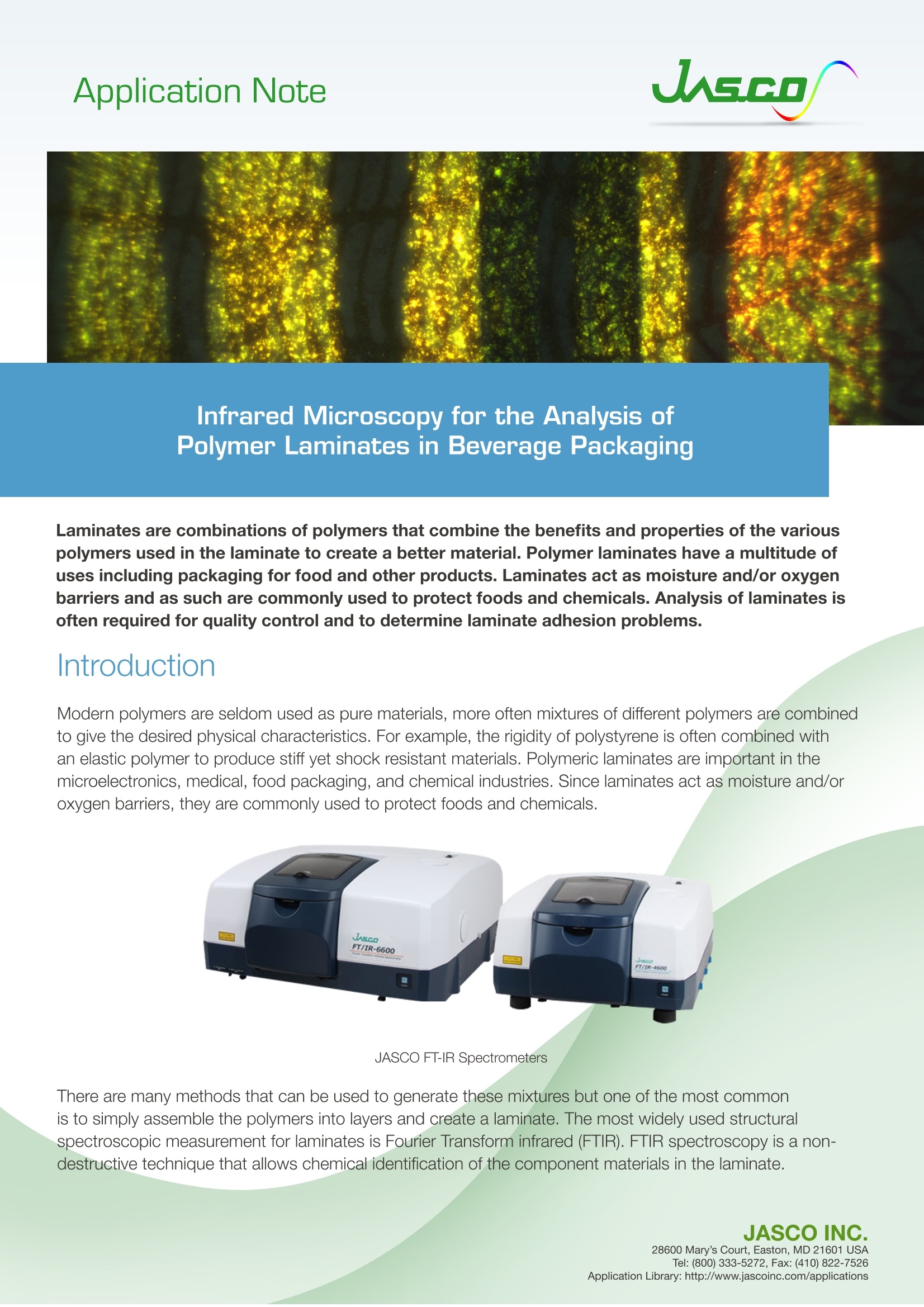
-
2/3
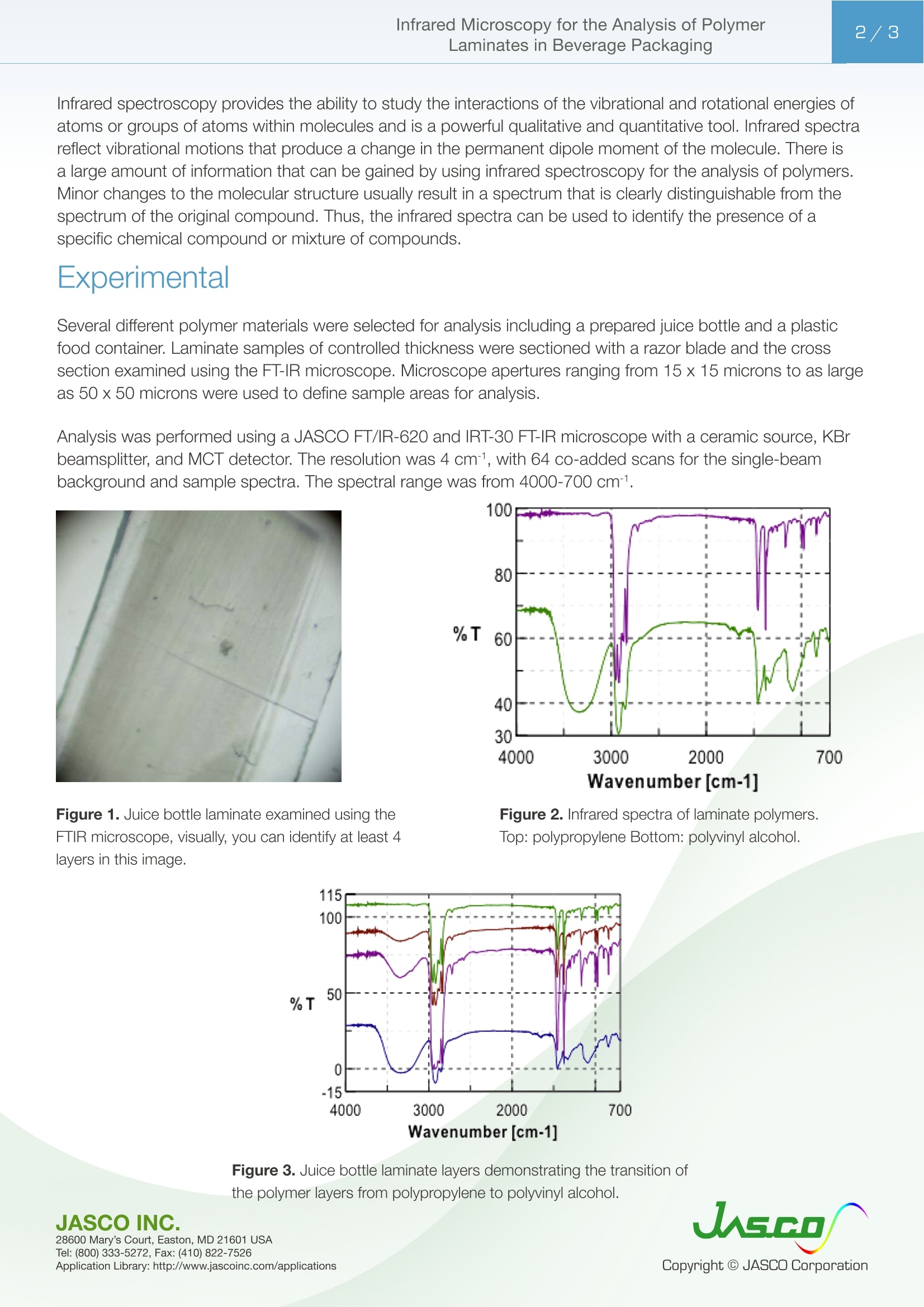
还剩1页未读,是否继续阅读?
继续免费阅读全文产品配置单
佳士科商贸有限公司为您提供《用于饮料包装中聚合物层压板分析的FTIR显微镜》,该方案主要用于包装中聚合物、成分材料化学识别检测,参考标准《暂无》,《用于饮料包装中聚合物层压板分析的FTIR显微镜》用到的仪器有jasco红外显微镜(IRT-5200)、JASCO FTIR-4000傅立叶变换红外光谱仪。
我要纠错
推荐专场
红外光谱(IR、傅立叶)
更多相关方案



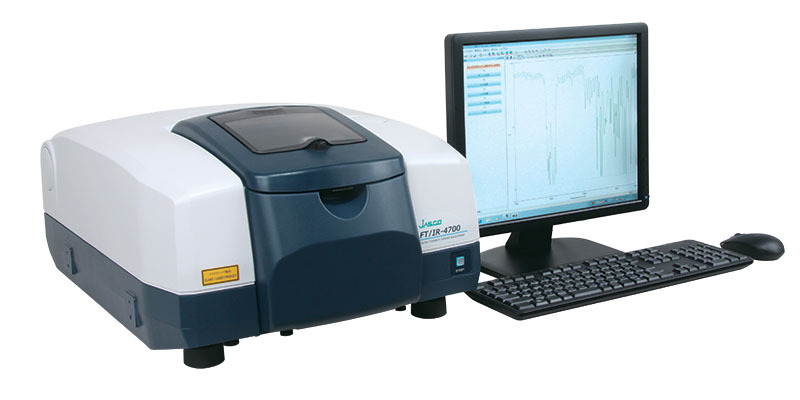


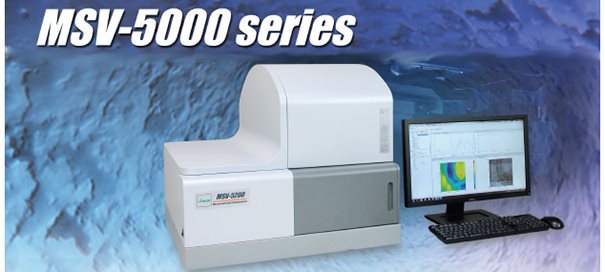
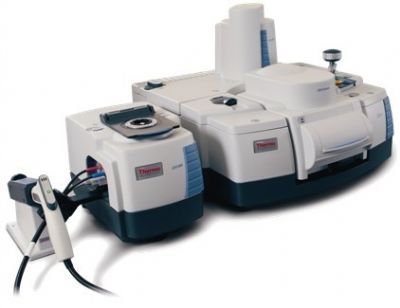
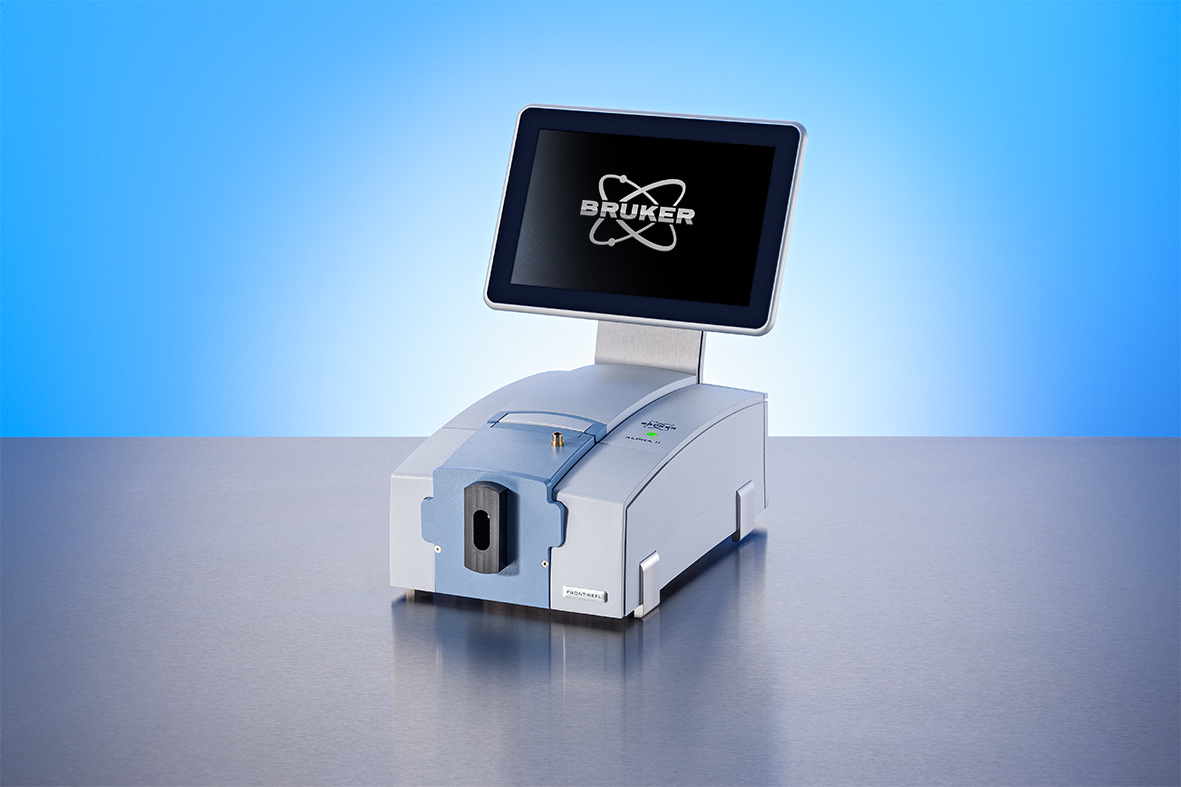
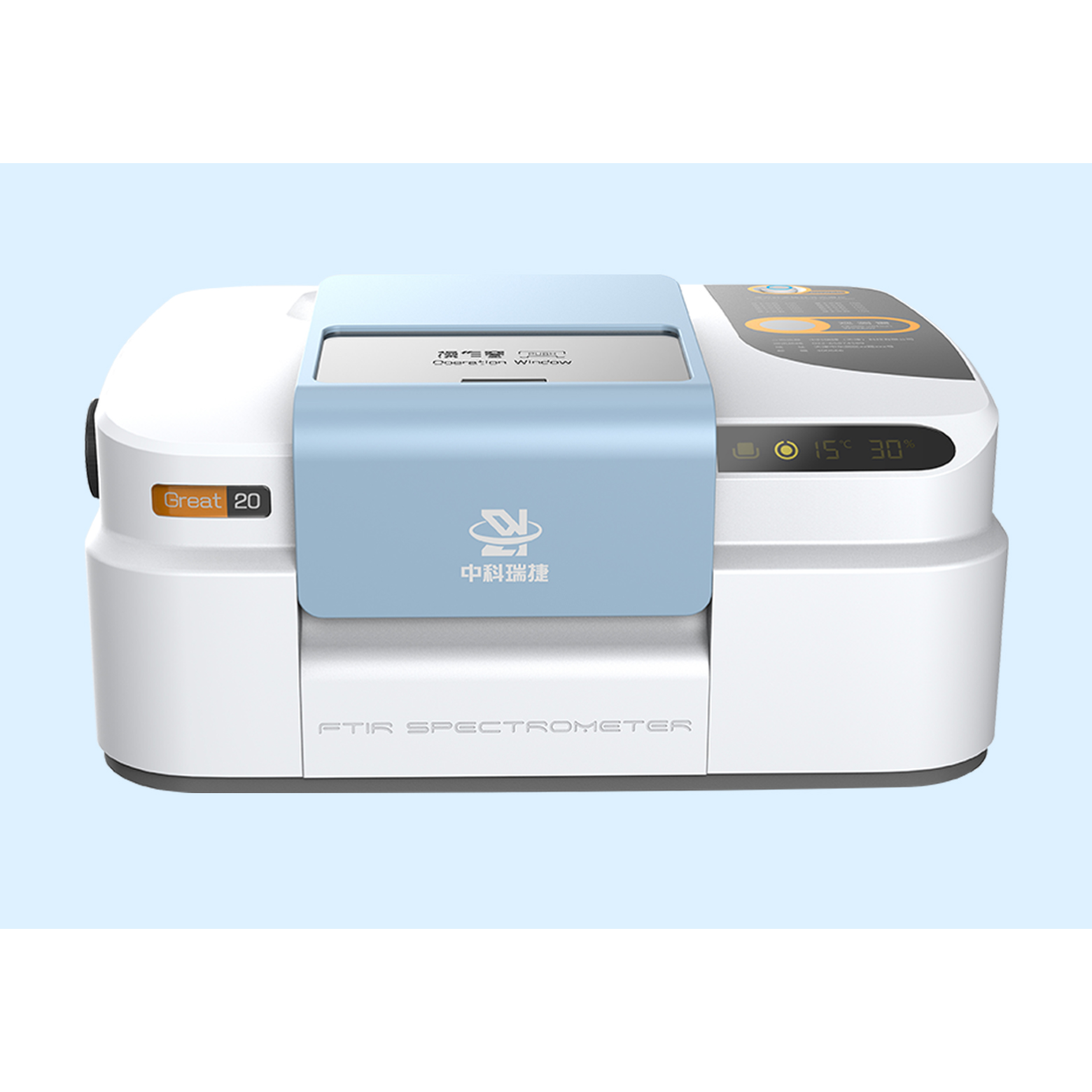
 咨询
咨询



